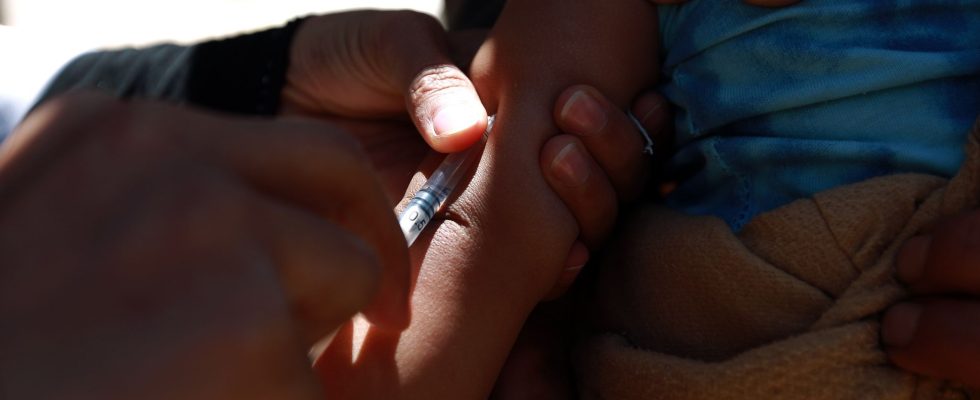Red alert at UNICEF. The organization is concerned, in a detailed study this Thursday, April 20, of declining vaccination coverage among children around the world. While the organization’s efforts have made it possible, since the end of the 1980s, to protect seven out of ten children against the most widespread diseases (diphtheria, tetanus, measles, tuberculosis, whooping cough, polyomyelitis), the latest data collected are not not good.
For example, to date, one child in five is not protected against measles in the world, even though a very effective vaccine has existed since 1963. In addition to the endemic causes, a new major data is reported by the Unicef: the Covid-19 epidemic, which has been raging since 2020. During the pandemic, vaccination coverage fell sharply and “in three years, more than a decade of progress in immunization has been eroded”, writes the director Executive Director of Unicef, Catherine Russell, in the introduction to the report.
The data shared by Unicef proves that the Covid has marked a break. Between 2019 and 2021, 48 million children lost their immunization entirely, and 19 million lost it partially. Rates never reached since 2008. Based on this observation, the United Nations Children’s Fund sets out the reasons for the harmful role of Covid-19 on the vaccination coverage of children. First, the pandemic has greatly accentuated the staff shortages that already exist in health establishments. Second, it strained every component of the health services, imposing new standards on them that they could not meet. Finally, for fear of contracting the virus, she encouraged families to postpone the various vaccinations of their children.
The disparities are great according to the regions of the world. Thus, poor countries pay the most for the consequences of Covid-19 on the general vaccination of children. On the African continent, 12.7 million children have not received one or more vaccines in the past three years. In Somalia, the report says, 49% of children had not received any vaccine dose in 2021. This is also the case for 35% of them in Angola, and 30% in Nigeria and Ethiopia.
If the Covid-19 pandemic is bad news in the fight against preventable diseases, deeper causes exist, and Unicef wishes to recall them. “The story of unvaccinated children is a story of inequity, poverty and an underserved community,” the report reads. In the poorest households, just over one in five children received no dose, while it is one in twenty in the richest. Worse, in West and Central Africa, one out of two poor children is not vaccinated against any disease.
Gender inequalities at the heart of the scourge
The precariousness of mothers is largely responsible for the low vaccination rate of their children. According to a study by the International Center for Equity and Health, based in Pelotas (Brazil), and cited in the report, the less women are educated, the less their children are vaccinated (23.5% of children born to women without any education did not receive a vaccine, compared to 13.1% of those born to a mother who had attended primary school and 6.9% among those born to a woman who had reached high school).
The situation of young girls is alarming, since only one in eight girls in the world has received a vaccine against the human papillomavirus, responsible for cancers of the cervix or vagina. It should be noted that in middle-income or low-income countries, children living in urban areas are very little vaccinated (one in ten), compared to one in six for those growing up in rural areas. This gap disappears in states with upper middle incomes. And, unsurprisingly, regions affected by conflict are those where children are the least vaccinated (two out of five have not received any doses).
To counteract this phenomenon, UNICEF intends to engage in a constructive dialogue with governments, urging them to “identify and reach all children urgently”, “prioritize funding for immunization services”, “strengthen the resilience of health systems by investing in female health personnel” or “strengthening demand for vaccines”.
